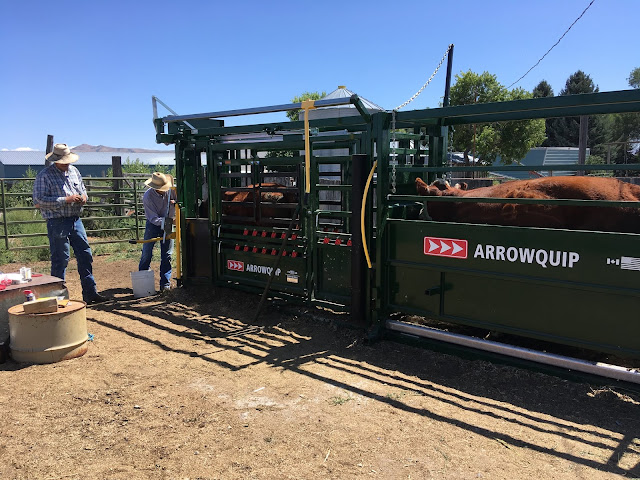He showed us photos of beautifully restored grasslands after addressing decades of overgrazing by sheep. One photo showed a sea lion lounging amongst giant tussock grass plants along the shoreline - with cattle in the background! Turns out that grazing, if done at the right time of year and then allowing the plants to regrow, can complement the use of the same habitat by sea lions. Other seashore users are penguins, who prepare a kind of seedbed with their nesting activity. Ben and a group of volunteers then follow up by planting plugs of tussock grass thereby restoring a healthy coastline.
Wednesday, August 28, 2019
An Eight-Thousand Mile Handshake
He showed us photos of beautifully restored grasslands after addressing decades of overgrazing by sheep. One photo showed a sea lion lounging amongst giant tussock grass plants along the shoreline - with cattle in the background! Turns out that grazing, if done at the right time of year and then allowing the plants to regrow, can complement the use of the same habitat by sea lions. Other seashore users are penguins, who prepare a kind of seedbed with their nesting activity. Ben and a group of volunteers then follow up by planting plugs of tussock grass thereby restoring a healthy coastline.
Thursday, August 15, 2019
Dot makes the Grade, and other News
We've been moving cattle around like usual. Here at home the heifers have been seesawing through irrigated pastures. We blood tested the group of possible replacement heifers for pregnancy, and then armed with the results, gave each one a new identification tag to join the breeding herd. We appreciate the new processing chute even more each time we use it. It's quiet, safe and functional. A good design always makes such a difference.
The other heifers will head to a final feeding phase before being turned into nutritious food. The flow of energy from the sun, to plants, to animals, will be completed as nature intended. But as Seth told me, "Mom, it's not by some grand design or intention. It's what worked!" What he means is that ruminants cycling cellulose created from the sun's energy - while moving frequently - worked throughout evolutionary time to provide for multitudes of species. Many folks, especially the fake meat crowd, are blind to this simple process.
I've been having fun with my young border collie, Dot. She's really pulling her weight now after a slow start. She excels at fording streams and canals to gather cattle on the other side. She's gaining confidence and following my cues to stay where she's needed. She's finally learning to move off a steady stare and to commence "herding," which is after all her job. I'm no expert trainer. We just stumble along and somehow get the cattle where we want them, learning as we go. Sure is fun with a helper.
Mark and I spent a night in the mountains to fix fence and move cattle. After fencing for several hours, we quit early - well 7:00 pm or so - and tried out our new solar shower before fixing supper. It was great, even though we added hot water to please Mark for his turn. The next morning I woke up with a sick headache and still had to get on Jane and ride for several hours moving cattle. I had forgotten my meds, but hoped if I ignored it, my headache would go away. And it seemed to do just that while in the midst of herding a bunch of cows that didn't know where they were going. But when we finished and had to ride the hour back to the cabin, I was miserable.
Summer moves quickly at high elevation. The wrens are already gone from around the cabin. They had a nest at the outhouse and scolded us continuously on our last trip. It's getting quiet too soon for me.
The other summertime constant at home, besides moving cattle, is moving water. Mark heads to the ditches every morning. He keeps a plastic tub in the bed of his pickup to collect trash that shows up in the waterways. It's easy to understand how garbage ends up in the ocean because water intercepts objects which then make their way downstream. Most of it is single-use plastic drink containers. What an unnecessary crutch we're teaching our kids to expect. And even if you don't throw it on the roadside, it ends up somewhere. We can do better.
 |
| early morning gather |
 |
| the power of a good design |
 |
| tools of the trade |
 |
| what the canals (and Mark) gather up |

